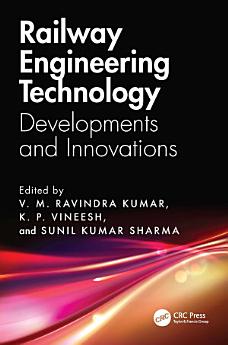Railway Engineering Technology: Developments and Innovations
About this ebook
Features:
- Comprehensively reviews various aspects of railway engineering technology.
- Discusses major failure mechanisms and various types of braking systems.
- Covers the modernization of railways and high-speed trains.
- Explores emerging topics such as digital twin technology, sustainable practices, and autonomous technologies.
- Includes case studies of railway component failures and accidents.
This book is aimed at researchers and professionals in railway and mechanical engineering as well as transportation systems.
About the author
V. M. Ravindra Kumar is a faculty member at the School of Mechanical Engineering at VIT-AP University. He received a Ph.D. from the Indian Institute of Technology, Kharagpur. He worked on a major railway engineering problem, “Locomotive Wheel Failure from Excessive Wheel Gauge Change,” and successfully identified the root causes of the problem. His research areas include railway engineering, numerical modeling of manufacturing processes, 3D and 4D printing. He has published research articles in various national and international journals and contributed to book and book chapters. He has the experience of working in sponsored research projects.
K. P. Vineesh is a faculty member in the Department of Mechanical Engineering at the National Institute of Technology Calicut. He has 8 years of experience in teaching, research, and academic administration. He obtained his Ph.D. from the Indian Institute of Technology Kharagpur. His major research areas are railway engineering, machine design, metal additive manufacturing, and vehicle dynamics. He has several peer-reviewed international journals in his core research areas and holds two patents.
Sunil Kumar Sharma is a Professor and Chair of Rail Vehicle Technology at the Institute of Railway Vehicles and Railway Technology, Technische Universität Dresden, Germany, and an Assistant Professor at Gati Shakti Vishwavidyalaya, Vadodara, a Central University established by the Ministry of Railways, Government of India. He received his Ph.D. from the Indian Institute of Technology, Roorkee. He has worked at the Non-destructive Evaluation and Structural Health Monitoring Laboratory at C.N. University, South Korea. His research interests include vehicle dynamics, contact mechanics, mechatronics, and real-time software-enabled control systems for high-speed rail vehicles. He has published several research articles in national and international journals, contributed to book chapters, and edited a book. He is among the top 2% of scientists in a global list compiled by Stanford University, USA.





